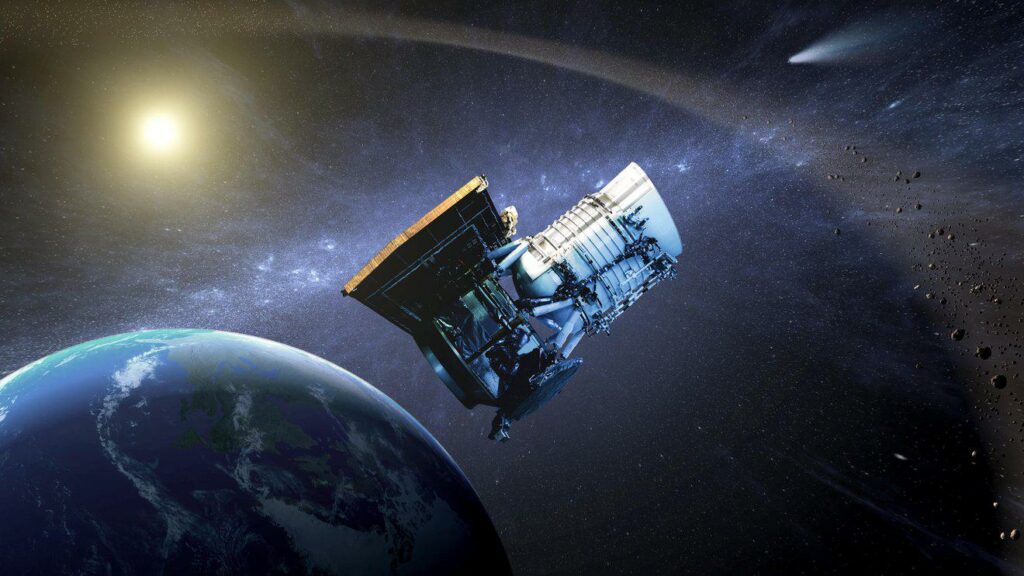The height of the orbit of the NEOWISE telescope has decreased so much that it will fall to Earth as early as November 2. This was reported by astrophysicist Jonathan McDowell.

The NEOWISE telescope was launched by NASA in 2009. At that time, it was called WISE. The purpose of its mission was to make an infrared survey of the entire sky. The data collected by the telescope gave astronomers the opportunity to detect tens of millions of active supermassive black holes, 34,000 previously unknown asteroids, as well as many other objects.
By the end of 2010, the telescope had exhausted the coolant needed to keep its instruments cool and was unable to continue its primary mission. After a while, NASA specialists found another application for it. They began using the telescope to search for near-Earth bodies that could pose a threat to our planet.
NEOWISE resumed observations in 2013 and continued until 2024. The telescope could have continued to work, but this was prevented by a decrease in its orbit, mostly related to the sharp increase in solar activity. The fact is that NEOWISE has no engines and cannot correct its altitude. The increase in solar activity has led to the “bloating” of the Earth’s atmosphere and to an increase in the braking effect it has on low-orbiting vehicles. And NEOWISE was no exception. Back in late 2023, it was in orbit at an altitude of 480 kilometers. By July 2024, its altitude decreased to 380 kilometers. By August, it was at 360 kilometers.
As a result, NASA had to make a decision to end the NEOWISE mission. On July 31, the telescope stopped scientific observations. After transmitting all the collected information back to Earth, the specialists sent NEOWISE the final command to turn off the transmitter. This was the end of the telescope’s 15-year mission.
The (super succesful) NASA infrared astronomy satellite WISE, launched to a 527 x 532 km orbit in 2009 and retired on 2024 Aug 8, is now in a 206 x 213 km orbit; the 645 kg spacecraft is expected to reenter on Saturday.
— Jonathan McDowell (@planet4589) October 30, 2024
Since then, the telescope’s altitude has decreased even further. According to astrophysicist Jonathan McDowell, who specializes in tracking satellites, on October 29, NEOWISE was in an orbit with a perigee of 206 km and an apogee of 213 km. According to scientist estimates, the telescope will enter the Earth’s atmosphere as early as November 2. The mass of the vehicle is 600 kg, so some of its debris will be able to reach the Earth’s surface. But its exact location will become clear only a few spins before its orbital descent.


